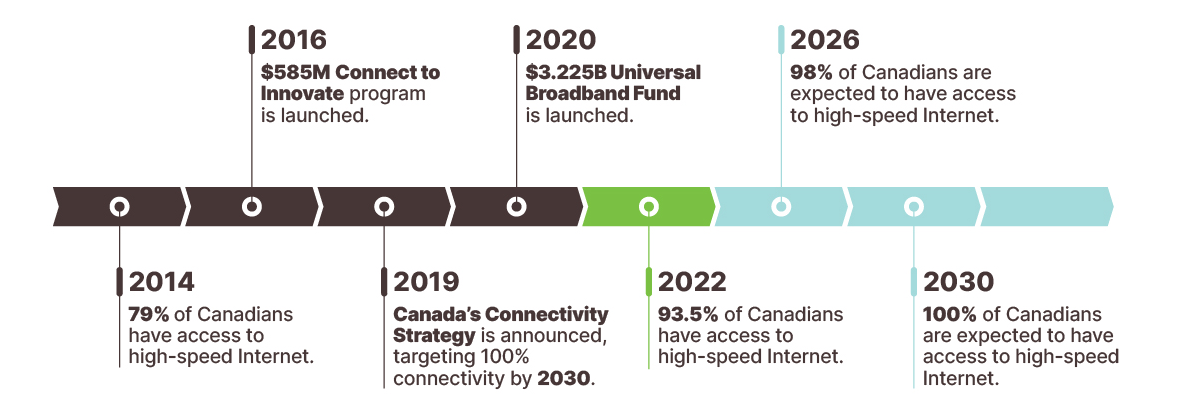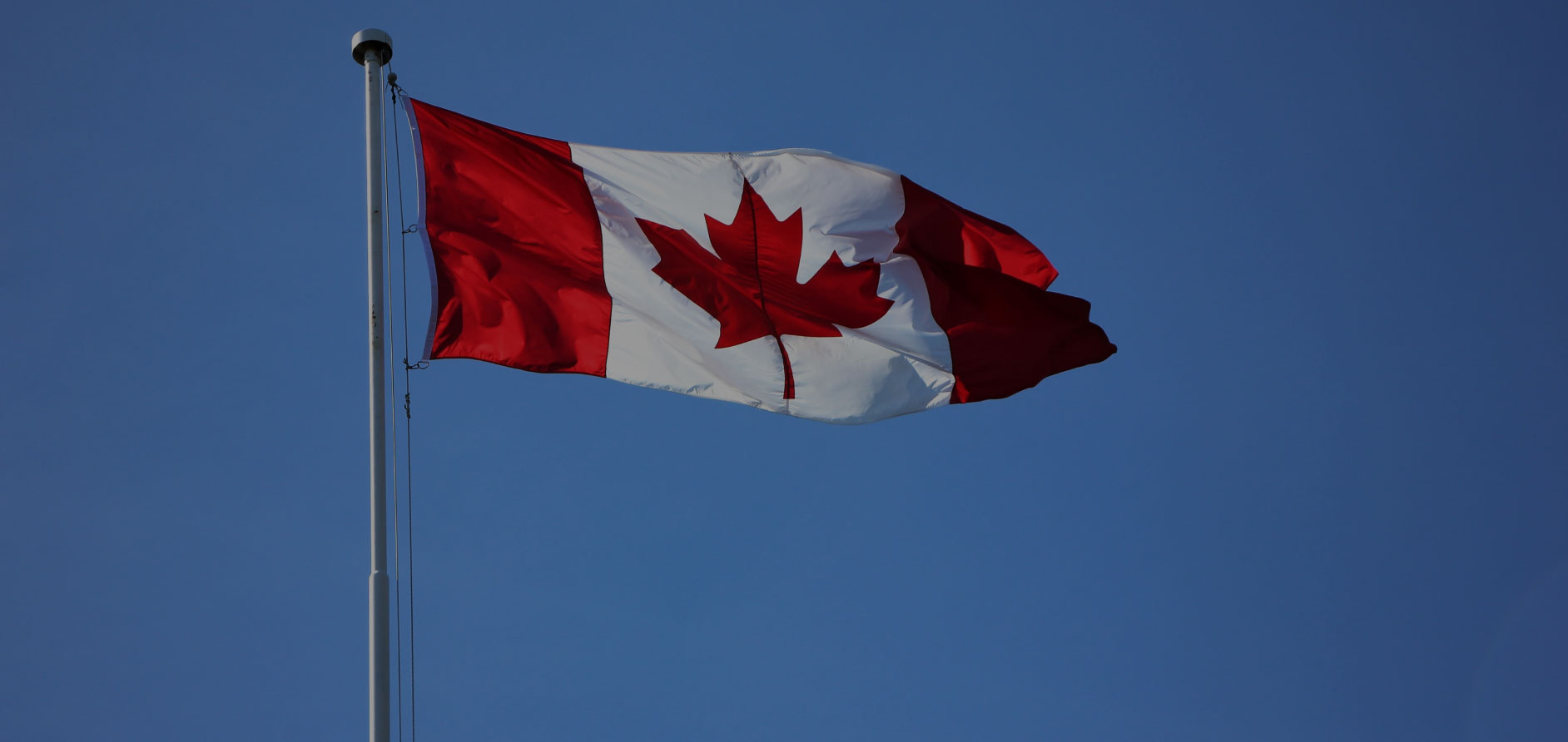Consider all the things we use the internet for: work, education, health care, entertainment, essential services, even mental well-being for isolated individuals who need it to connect to loved ones. When you start to add it all up, it’s plain to see that the internet isn’t just an amenity – it’s a basic utility necessary for daily functioning.
As such, Canada’s federal government has laid out a plan to ensure every Canadian has access to the internet. And not just internet, but high speed internet – the government has established a minimum level of internet speed that allows for the daily functioning Canadians need.
The Universal Broadband Fund (UBF), a $2.75 billion investment by the Government of Canada, was established to provide high-speed internet access to 98% of Canadians by 2026 and 100% access by 2030. The 2030 target factors in households that are in remote and rural areas who are typically stifled by less than favourable infrastructure and environmental conditions.
The funding includes:
- “Up to $50 million for mobile Internet projects that primarily benefit Indigenous peoples, including projects along highways and roads where mobile connectivity is lacking;
- Up to $750 million for large, high-impact projects;
- Through a Rapid Response Stream for shovel-ready projects that can be completed quickly.”

Beyond Finances: Canada’s high speed internet ambitions and community engagement
Making these broadband services available in rural communities is going to take more than capital funding. A genuine understanding of the communities’ needs is vital for success. Canada’s federal government pledges the following to ensure success happens at every level:
- “Continue to engage with Canadians, the provinces and territories, the private sector, non-profit organizations, municipalities and Indigenous communities to support connectivity and broadband investments.
- Ensure the design and eligibility criteria for Government of Canada investments are designed to enable projects that best meet local needs and demonstrate strong local engagement.
- Reduce administrative burden and increase effectiveness by working with partners to align application requirements where possible, and improve information and guidance on how to access funding.
- Ensure strong internal governance and accountability via new coordination frameworks.
- Share broadband data with partners and stakeholders and link relevant datasets, while respecting confidentiality and related provisions concerning stewardship of data.
- Launch a web portal, accessible even at low Internet speeds, that will host the Strategy as well as other Government of Canada connectivity initiatives and coverage information.
- Establish an expanded Centre of Expertise to improve broadband coordination.”
BrooksNET: Living Proof of the Vision’s Materialization
As progress on the BrooksNET network continues every day, we’re starting to see the vision of rural connectivity come to life. And not only are we meeting the minimum connectivity requirements, the speeds BrooksNET will be delivering go way beyond. CRTC (Canadian Radio-television and Telecommunications Commission) reports that speeds of 50 Mbps download and 10 Mbps upload reflect what is needed for Canadians to be fully engaged online:

With Galaxy Fibre providing the internet, the minimum speed of fibre packages available to Brooks is 500 Mbps and can go up to 2000 Mbps–equal for both downloads and uploads. Brooks has arguably one the best internet plans in the country at their fingertips, with affordable prices and top tier levels of service provided courtesy of Galaxy Fibre.
Sign up today to get fibre-powered high speed internet to your home!

